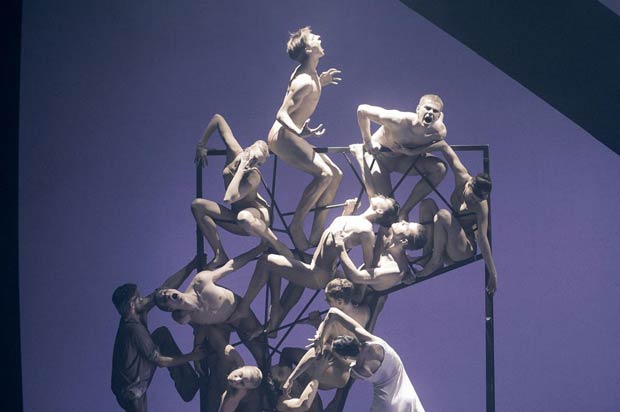
© Nikolay Krusse. (Click image for larger version)
Eifman Ballet
Rodin
Berkeley, Zellerbach Hall
11 May 2013
www.eifmanballet.ru
calperfs.berkeley.edu
In 2000 when I saw the Eifman Ballet for the first time I was struck by several elements in the ballet Tchaikovsky. The visuals – sets and costumes – were beautiful, as were the dancers. I remember thinking that the lack of coherent plot, or more to the point, a plot stretched so thin it was about to disintegrate, and the repetitious choreography, were major distractions. At least all the music was by Tchaikovsky. To be fair, Eifman has a talent for moving large groups of dancers on and off stage with magical fluidity.
One of the most interesting parts of an Eifman performance is standing in the lobby and hearing the audience speaking nothing but Russian. The publicist told me that she didn’t need to do more than advertise in the Russian language newspaper and five nights at the 962-seat Palace of Fine Arts Theatre would be quickly sold out. What I wanted to know was why the Russians were so enthusiastic. Then I realized that Eifman was entitled to make larger-than-life ballet productions – he’s Russian and both he and the Russians in the audience love everything that reflects the vastness and extremes of their homeland.
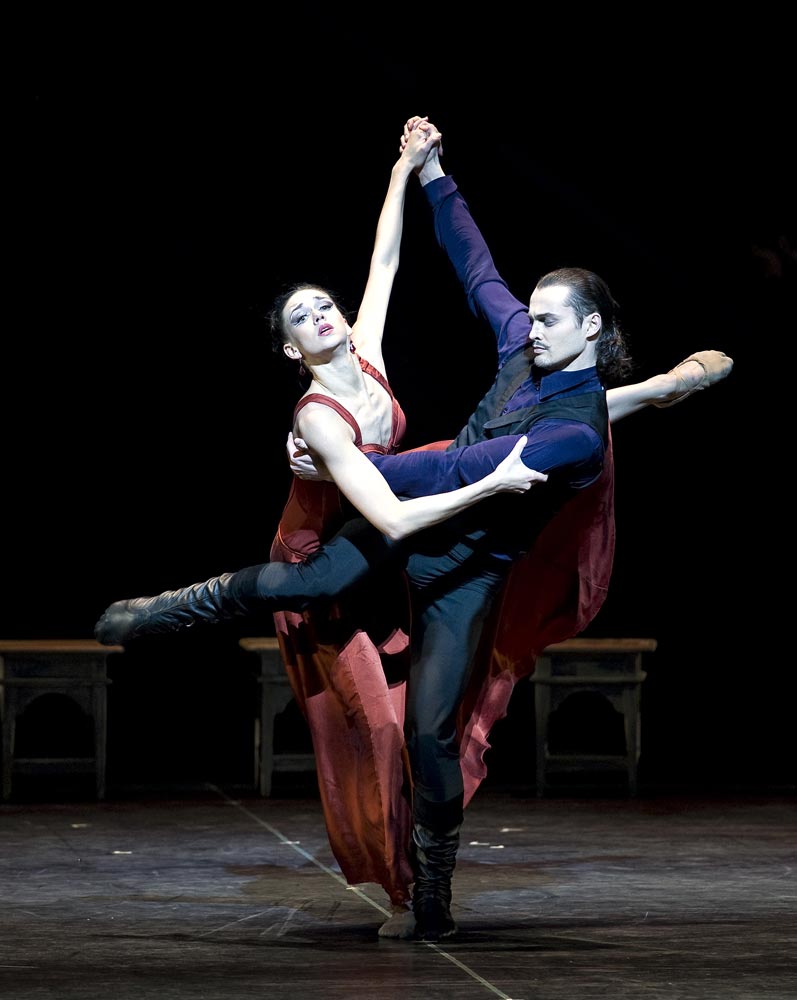
© Gene Schiavone and courtesy of Eifman Ballet. (Click image for larger version)
Fast forward thirteen years and I’ve just seen my eighth Eifman work, Rodin. Not much has changed. Still gorgeous sets and costumes, still amazing dancers, still confusing and over-extended plot, still good work with the corps de ballet, still an audience with many Russians, but the two ingredients which have changed are the music and the choreography.
Because Rodin lived and worked in Paris, Eifman came up with a pastiche of French musical compositions, or parts of them. The composers are Debussy, Massenet, Ravel, Saint-Saëns, and Satie, who are represented by some of their best-known works. That makes for a hodge-podge of styles that blatantly works against musical continuity and clashes with the visual unity of sets and costumes. The choice of music also feeds knee-jerk sentimentalism in those who are familiar with it, as the clichéd tunes cannot evoke much more than romantic kitsch.
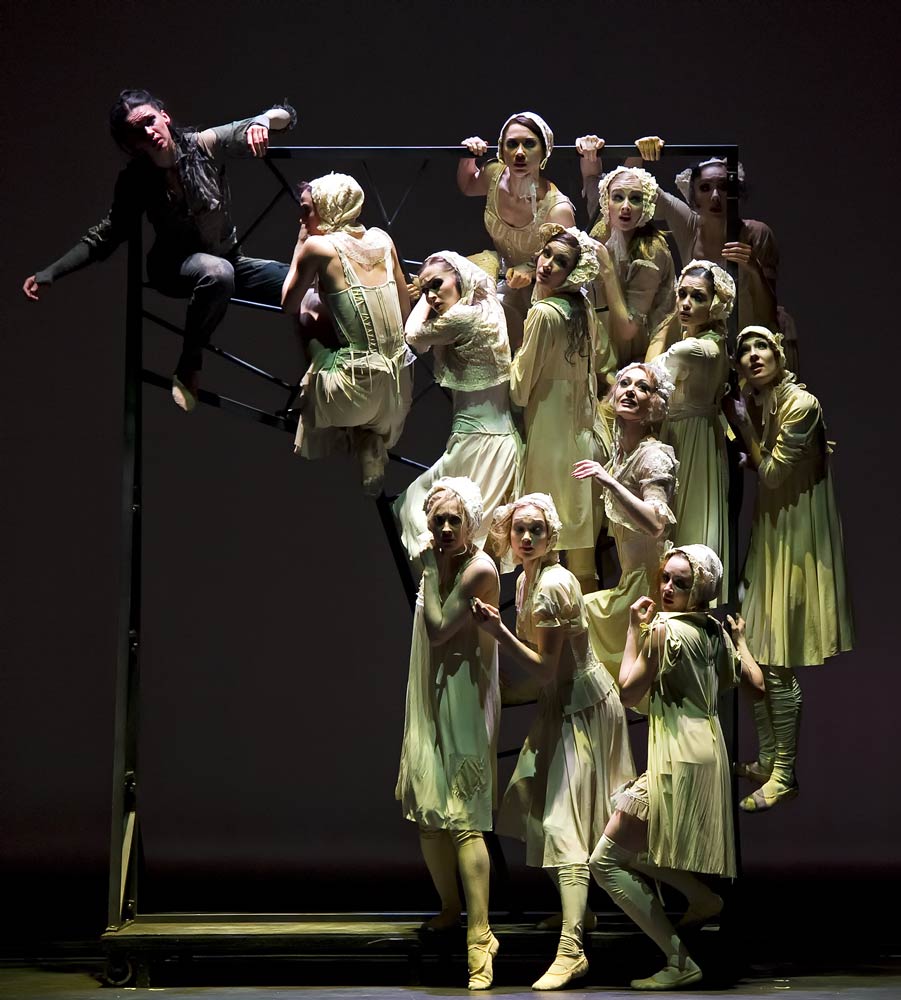
© Gene Schiavone and courtesy of Eifman Ballet. (Click image for larger version)
The choreography looks like a steroid-fueled hybrid of Graham-based agony and the precision and fluidity of classical ballet. Eifman’s earlier work utilised pointe shoes, but here he uses only soft slippers for the women, in effect grounding the movement literally and making it more difficult to convey any ethereal aspects of artistic creation as one might hope for in reflecting on Rodin’s sculpture. Am I mistaken in wanting some contrast to all the Sturm und Drang that Eifman attributes to the artistic process? An equivalent would be to see a play simultaneously channeling writers O’Neill, Pinter, and Beckett, in which the actors scream at the top of their lungs with no regard for the meaning of the words.
It makes complete sense that a Russian audience loves Eifman’s work. Before glasnost the dance repertoire in the old USSR was severely limited and left major dancers (and spectators, too) hungry for new choreographic challenges. Some of them even defected to the West in search of artistic growth. Today principal dancers from both the Bolshoi and Mariinsky Ballets spend time in Europe and the United States as guest artists and even join companies like American Ballet Theatre or the Royal Ballet. Without a doubt Eifman’s work bears scant resemblance to the old classics like Swan Lake, Giselle, or Sleeping Beauty and that is why its novelty is so highly prized. But in the West we have been used to seeing a broad spectrum of styles over the last century and might be less impressed.
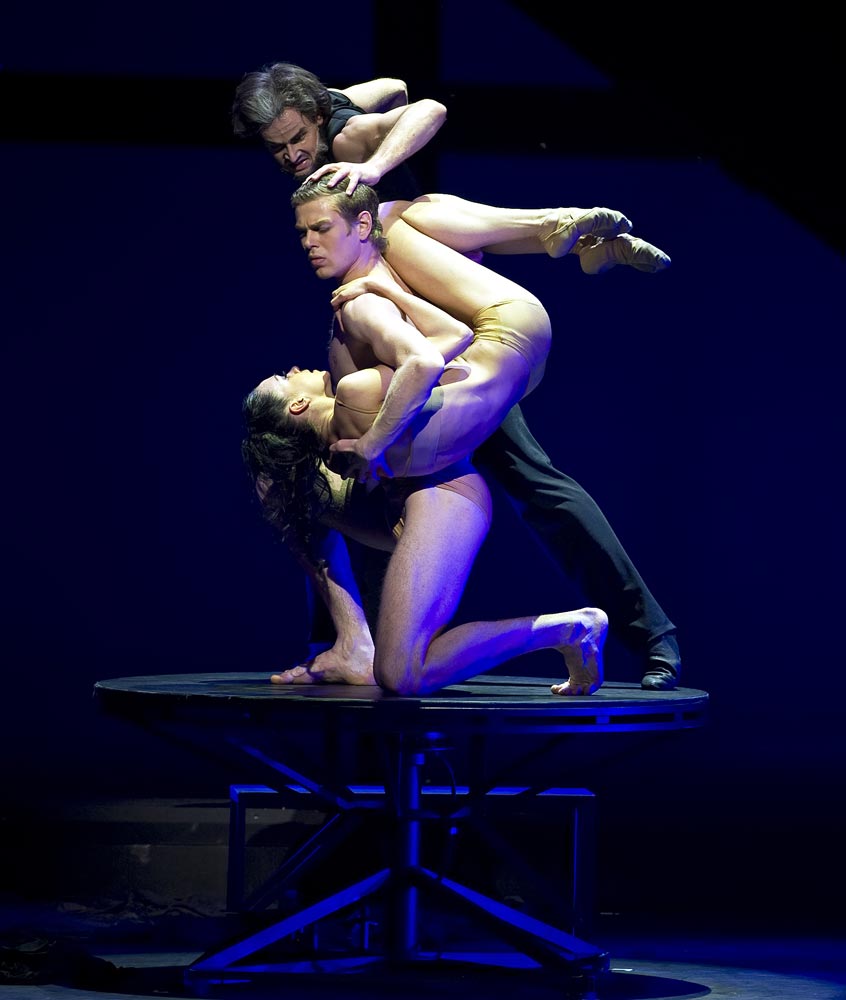
© Gene Schiavone and courtesy of Eifman Ballet. (Click image for larger version)
One director/creator who shares many of Eifman’s trademarks is John Neumeier. Although I have only seen four of the transplanted American’s full-length ballets – Illusions – like Swan Lake, Nutcracker, The Little Mermaid, and Nijinsky – I believe both choreographers produce a similar intense form of dance drama. Both companies have fabulous dancers and both men are terrific at delivering exceptional visual design for the stage. Subtlety is neither one’s strong suit. Or perhaps the bowdlerised saying – “nothing succeeds like excess” – sums up quite nicely their artistic endeavours.












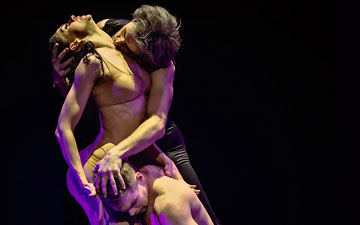
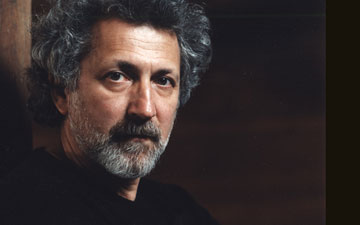
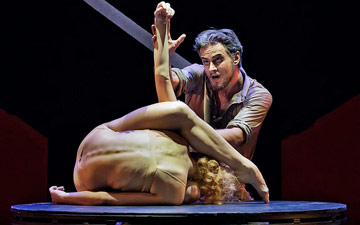


You must be logged in to post a comment.